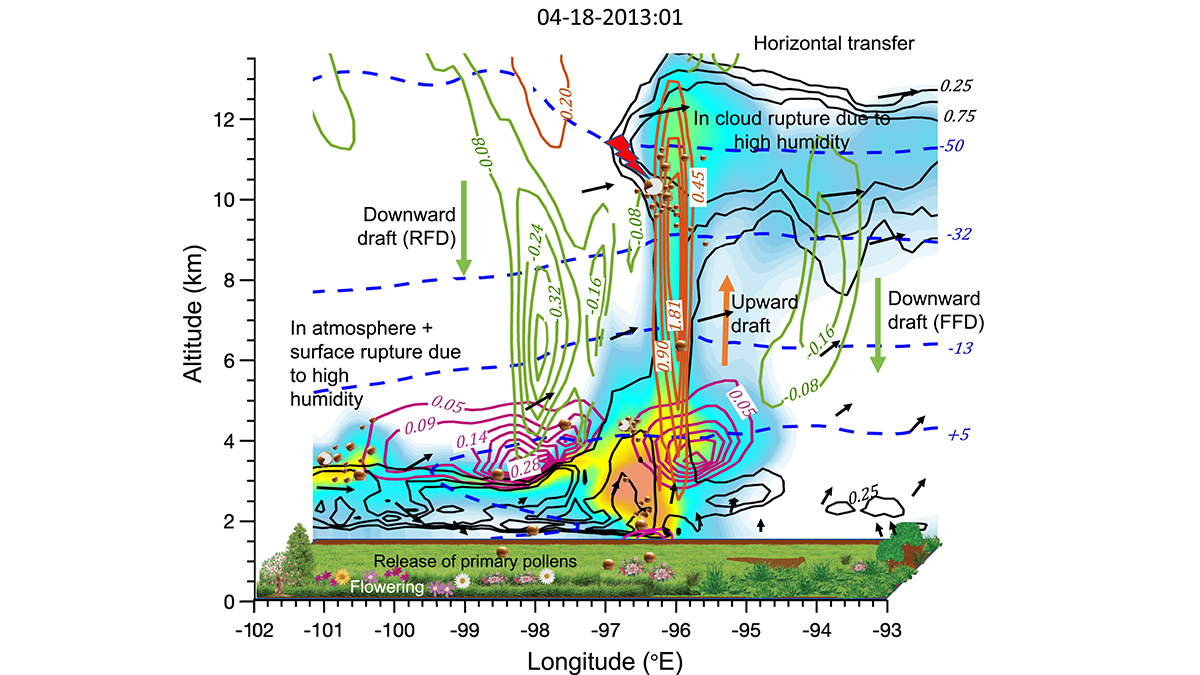Editors’ Highlights are summaries of recent papers by AGU’s journal editors.
Source: Journal of Advances in Modeling Earth Systems
Biological aerosols, such as pollen, are released from the land into the air and have impacts on atmospheric processes, climate, and human health. Depending on atmospheric conditions, large pollen particles can rupture and produce smaller fragments. These fragmented particles can be redistributed by convective processes and have the potential to influence clouds and precipitation. Subba et al. [2023] combine a newly developed pollen module into the Weather Research and Forecasting Model with Chemistry (WRF-Chem) to investigate the amount of pollen in the atmosphere and potential pathways for atmospheric rupture.
Model simulations showed that different atmospheric conditions can cause pollen to break apart, such as high humidity at the surface and in the atmosphere, and lightning strikes. These mechanisms can shift the original population of relatively large-size bioaerosols from the land surface into a new population of smaller particles that have implications as allergens and cloud-forming particles. These smaller, ruptured pollen particles are transported vertically through updrafts, horizontally through cloud outflows, and eventually reach the surface through downdrafts. In areas with abundant pollen and strong convection, these ruptured particles can affect the formation of clouds in the atmosphere.
Citation: Subba, T., Zhang, Y., & Steiner, A. L. (2023). Simulating the transport and rupture of pollen in the atmosphere. Journal of Advances in Modeling Earth Systems, 15, e2022MS003329. https://doi.org/10.1029/2022MS003329
—Jiwen Fan, Editor, JAMES

